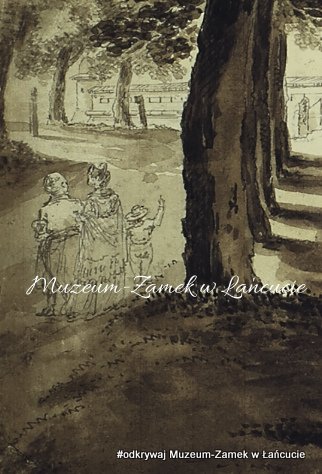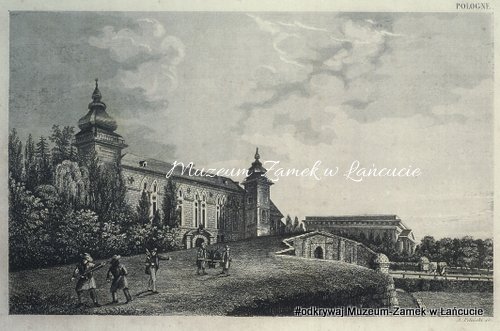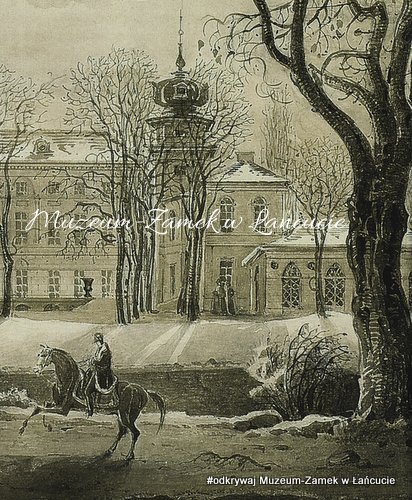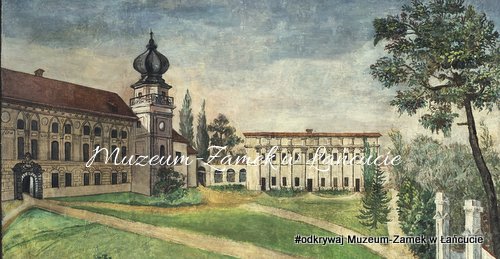ISABELLA AND CHANGE
The castle at the time of Izabella Lubomirska née Czartoryska (1736-1816) looked different than today. And it is worth remembering.
We have become so accustomed to its current appearance, its surroundings, its Baroque facade, that it is hard to imagine it in a different guise. Fortunately, old views of the Castle have been preserved and thanks to them we can travel back in time. Looking at the former western facade, we will see how Isabella's successive decisions created a magnificent residence.
The first surviving but unrealized plans of Hieronim Jędrzejowski concerned the transformation of the massing. This was to include the addition of symmetrical side risalits with a classicizing façade in front of the western facade. The new parts of the establishment were to house guest apartments, an arsenal and a warehouse.
In the 1870s, intensive transformation of the interiors was underway, the function of the layout was changed, the window twins were separated. The decision-making person at the time was Grand Crown Marshal Stanislaw Lubomirski. It was only after his death in 1783 that Lancut passed into the ownership of Izabella.
 |
| T. de Thomond, view of the castle 1890s fragment |
The break in construction investments in 1785-1791 was due to the Duchess's absence in Poland; upon her return to the country, she took Łańcut as her headquarters and began further work with redoubled energy. What the Castle looked like in the 1790s is shown in a watercolor by Thomas de Thomon (Swiss architect), where the almost flat surface of the upper part of the western facade can be seen behind a deep dry moat and a high earth embankment.
The most important architect at the time working for the Marshaless in Łańcut was Christian Piotr Aigner (from 1798). It is to him that we owe the neo-Gothic façade and the expansion of the Castle to include a south wing with the Grand Dining Room on the second floor, a library pavilion and summer room to the north, and a classicist orangery to the south.
 |
| A.Piliński, 19th century intaglio, view of the castle |
The Neo-Gothic façade (before 1807) was characterized by the use of pointed-arch frames over windows divided in pairs in the top story with tondas between them. An important element in the first and second stories is the flat rustication used. On the other hand, Izabella left the original 17th-century gate with the Szreniawa coat of arms. It was a very innovative, romantic solution.
 |
| J.Richter, view of Łańcut Castle from the north with neo-Gothic decoration, library pavilion and summer room ca.1830 |
They proceeded to level the old fortifications and gunwales with former turrets. And in 1810, in the northwest bastion, a romantic gloriette was built according to Aigner's design, on the model of the Mokotov one. An English garden with many rare plant species was established between the castle and the moat.
 |
|
|
These are not all the changes. At the Castle, lively work was going on in all the interiors at the same time.
MJT
all rights reserved
